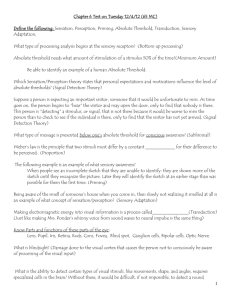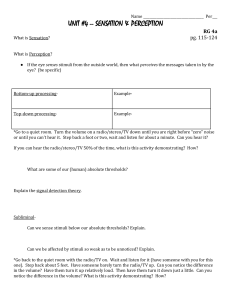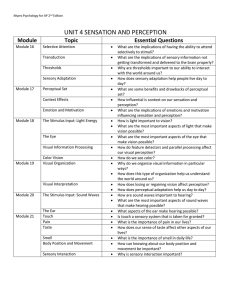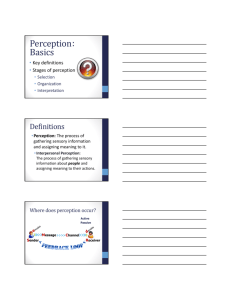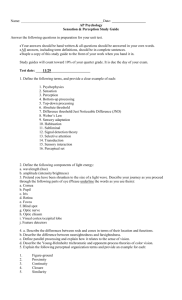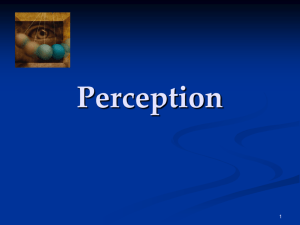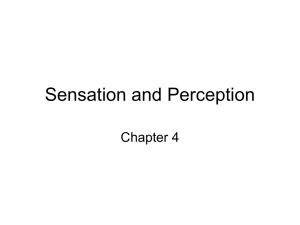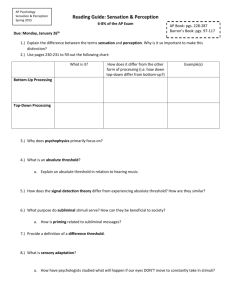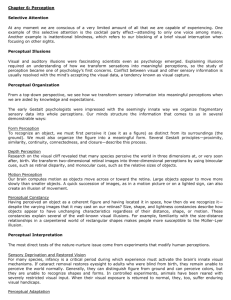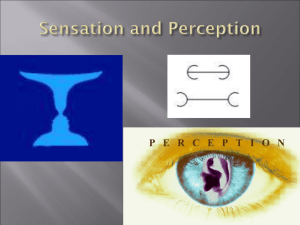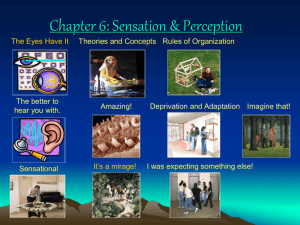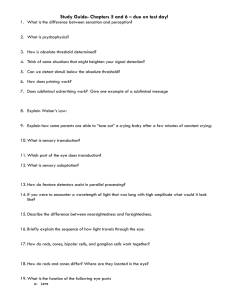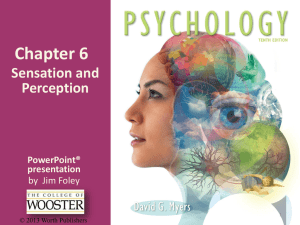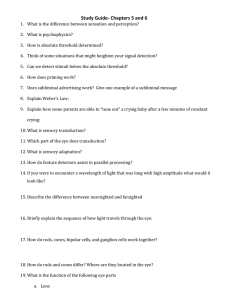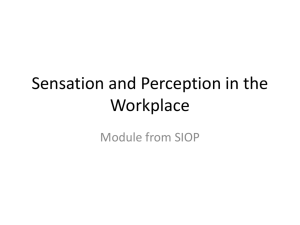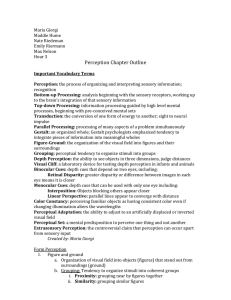STUDY GUIDE: UNIT IV – SENSATION and PERCEPTION AP
advertisement
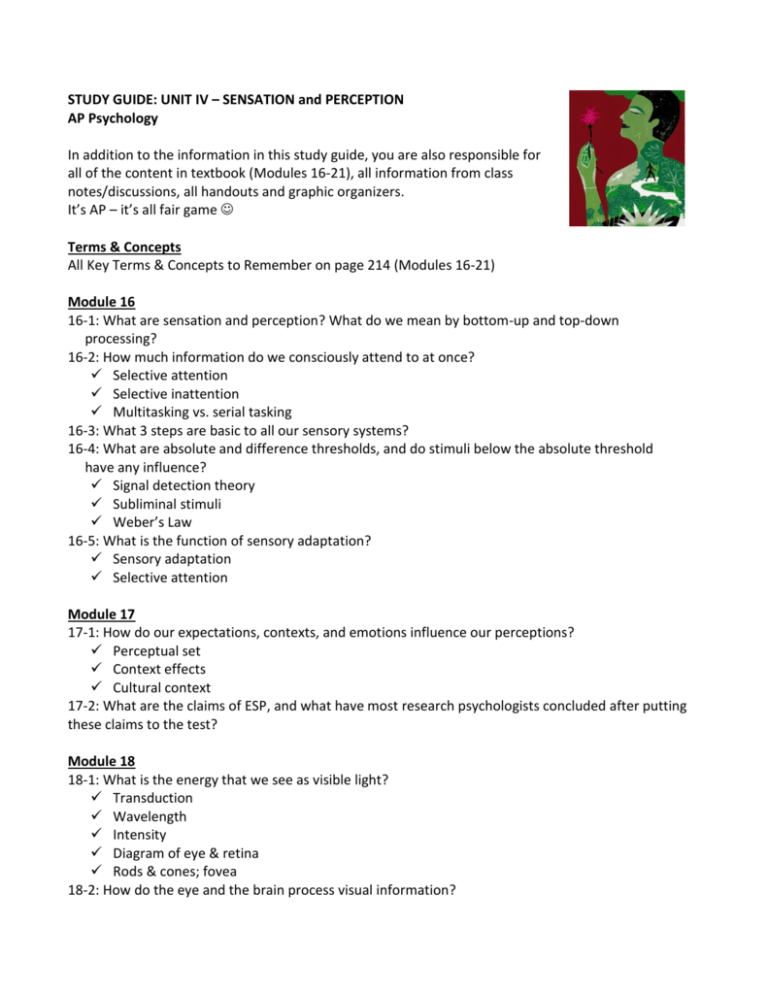
STUDY GUIDE: UNIT IV – SENSATION and PERCEPTION AP Psychology In addition to the information in this study guide, you are also responsible for all of the content in textbook (Modules 16-21), all information from class notes/discussions, all handouts and graphic organizers. It’s AP – it’s all fair game Terms & Concepts All Key Terms & Concepts to Remember on page 214 (Modules 16-21) Module 16 16-1: What are sensation and perception? What do we mean by bottom-up and top-down processing? 16-2: How much information do we consciously attend to at once? Selective attention Selective inattention Multitasking vs. serial tasking 16-3: What 3 steps are basic to all our sensory systems? 16-4: What are absolute and difference thresholds, and do stimuli below the absolute threshold have any influence? Signal detection theory Subliminal stimuli Weber’s Law 16-5: What is the function of sensory adaptation? Sensory adaptation Selective attention Module 17 17-1: How do our expectations, contexts, and emotions influence our perceptions? Perceptual set Context effects Cultural context 17-2: What are the claims of ESP, and what have most research psychologists concluded after putting these claims to the test? Module 18 18-1: What is the energy that we see as visible light? Transduction Wavelength Intensity Diagram of eye & retina Rods & cones; fovea 18-2: How do the eye and the brain process visual information? Feature detectors Parallel processing/Visual information processing 18-3: What theories help us understand color vision? Young-Helmholtz trichromatic theory Color blindness & opponent colors Module 19 19-1:How did the Gestalt psychologists understand perceptual organization, and how do figure-ground and grouping principles contribute to our perceptions? Form perception & grouping 19-2: How do we see the world in three dimensions and perceive motion? Depth perception & visual cliff Binocular & monocular cues Phi phenomenon 19-3: How do perceptual constancies help us organize our sensations into meaningful perceptions? Perceptual constancy, color constancy, size-distance relationship, lightness constancy Ames room 19-4: What does research on sensory restriction and restored vision reveal about the effects of experience? Perceptual interpretation (Molyneux & Locke) Perceptual adaptation Module 20 20-1: What are the characteristics of air pressure waves that we hear as sound, and how does the ear transform sound energy into neural messages? Frequency & intensity Middle ear, cochlea, inner ear Conduction hearing loss Sensorineural hearing loss Cochlear implants – why the controversy? Intensity/loudness 20-2: What theories help us understand pitch perception? Frequency theory Place theory 20-3: How do we locate sounds? Module 21 21-1: How do we sense touch? 21-2: How can we best understand and control pain? Gate control theory & biopsychosocial influences Pain control 21-3: How do we experience taste and smell? 21-4: How do we sense our body’s position and movement? Kinesthesis & vestibular sense 21-5: How do our senses interact? Sensory interaction Embodied cognition





